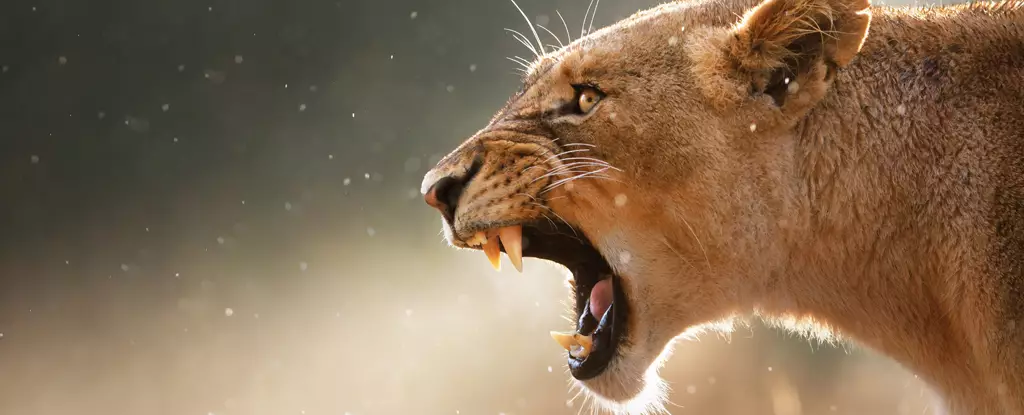In the vast expanse of the African savannah, the hierarchy of predators traditionally casts lions as the supreme hunters. Boasting potent physical attributes—ranging from their powerful muscular build to their razor-sharp claws and fangs—lions invoke fear in their prey. However, recent research conducted by conservation biologists reveals a disquieting truth: the animals of the savannah experience far greater trepidation in the presence of humans than they do when facing these majestic carnivores.
According to Michael Clinchy, a leading conservation biologist from Western University in Canada, this crucial finding highlights a significant shift in understanding wildlife behavior. For over a decade, ecologists have tracked the interactions of various mammal species through thousands of recorded observations. Remarkably, 95% of the recorded animal responses indicated a more pronounced reaction to the sounds of humans compared to those produced by the dominant lions.
The Unseen Predator: Human Influence
Clinchy emphasizes the deeply entrenched fear that wildlife holds towards humans. He argues that contrary to the notion that animals might become desensitized to human presence over time, his research demonstrates that this fear is both ingrained and pervasive. The assumption that wildlife would become habituated to humans in non-threatening scenarios, particularly when not hunted, is fundamentally flawed.
One pivotal study, led by ecologist Liana Zanette, involved broadcasting human vocalizations at strategically chosen waterholes within the Greater Kruger National Park. The soundscape included everyday conversations in local languages, such as Tsonga and Afrikaans, alongside the ominous sounds of gunshots and barking dogs. Interestingly, the team found that when elephants and other mammals heard human conversations, they showed significant avoidance—a reaction that starkly contrasted their responses to lion communication, which was characterized by growls and snarls rather than roar.
The experiment’s outcomes were striking. All nineteen mammal species monitored displayed a twofold increase in their likelihood to abandon the waterholes upon hearing human voices, as opposed to the sounds emitted by competing carnivores. This list of species included some of the most imminently dangerous yet magnificent creatures in the animal kingdom—rhinos, elephants, and leopards, to name a few. Despite their formidable presence, these mammals often choose to flee when confronted with the specter of human presence.
The inclination of wildlife to prioritize avoidance of humans over even the apex predator of the savannah sheds light on how deeply the wounds of ecological disturbance inflicted by humanity run. Throughout history, humans have posed a consistent threat to animal populations, exacerbated by poaching, habitat destruction, and environmental degradation.
The repercussions of this heightened fear extend into the survival of numerous species. Recent studies suggest that prolonged exposure to fear can reduce reproductive success and stress the ecological balance, resulting in dwindling populations of savannah mammals. The adaptive pressures imposed by human activity result in populations that exhibit less resilience, making them particularly vulnerable to extinction.
Zanette comments on the critical nature of this phenomenon, highlighting how human presence alone instills a sense of danger deep within the wildlife community. This realization is pivotal for conservation strategies. By utilizing the instinctive responses of animals to human sounds, there might be potential doors opened for future conservation efforts. For example, strategically broadcasting human vocalizations in areas known for poaching could perhaps deter poachers from harming endangered species like the Southern white rhino.
The juxtaposition of humans against the backdrop of the animal kingdom reveals a broader narrative of fear and survival that is rooted in our own existence. This research serves as a clarion call, emphasizing that while we often envision ourselves as mere observers of wildlife, we are, in fact, active participants in shaping their ecological fate.
It is imperative to cultivate a deeper understanding of how our presence not only disrupts but terrifies wildlife, reinforcing our role as nature’s unseen predator. As discussions on biodiversity and conservation continue to evolve, acknowledging the psychological ramifications of human activity on wildlife behavior should remain paramount. Ultimately, fostering a more harmonious relationship with nature necessitates both a conscious effort to minimize our destructive tendencies as well as an understanding of the profound fear we evoke in the creatures with whom we share this planet.

